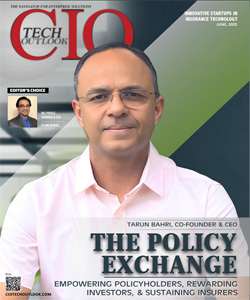Driving Business Value through Strategic IT Decision-Making
Anand Deodhar, Group CIO, Force Motors
 Anand Deodhar, Group CIO of Force Motors, recently shared his perspectives with CIOTechOutlook on how manufacturing enterprises can balance innovation and risk while developing resilient, future-ready digital infrastructures. He emphasized the importance of structured technology adoption, data-driven decision-making, and collaborative governance as key pillars of successful digital transformation. According to him, fostering a culture of innovation requires strong change management, predictive scalability, and a robust data strategy—critical for creating sustained business value in today’s hyper-competitive environment.
Anand Deodhar, Group CIO of Force Motors, recently shared his perspectives with CIOTechOutlook on how manufacturing enterprises can balance innovation and risk while developing resilient, future-ready digital infrastructures. He emphasized the importance of structured technology adoption, data-driven decision-making, and collaborative governance as key pillars of successful digital transformation. According to him, fostering a culture of innovation requires strong change management, predictive scalability, and a robust data strategy—critical for creating sustained business value in today’s hyper-competitive environment.
With deep domain knowledge in SAP, IT infrastructure, and enterprise digitization, Anand Deodhar brings over two decades of cross-functional leadership experience. As Group CIO, his technology strategy spans the entire manufacturing value chain—from goods receipt to final vehicle sales—ensuring that IT investments directly support business growth. Renowned for aligning IT roadmaps with business priorities, he is also known for building agile, high-performing teams that thrive in a fast-evolving landscape.
How do organizations balance the need to stay ahead with the risks of adopting emerging technologies too quickly?
The pace of technological advancement often puts pressure on manufacturers to adopt innovations rapidly. However, uncalibrated adoption can compromise operational stability, security, and process consistency. A balanced path forward involves structured technology scouting, phased pilot implementations, and continuous engagement with business leaders. By aligning IT initiatives with core business KPIs and implementing innovation in controllable phases, organizations can stay competitive while minimizing disruption.
How can businesses foster innovation while managing associated risks effectively?
Innovation needs breathing space to flourish, but without structure, it can open the door to compliance, security, and reputational risks. I have embedded governance mechanisms into every stage of our innovation lifecycle. For instance, when introducing a generative AI-based reporting assistant for production teams, I initiated multi-stakeholder reviews to ensure data governance, ethical usage, and alignment with operational compliance.
I plan to institutionalize a Digital Innovation Council to evaluate new tech proposals on three dimensions: strategic alignment, scalability, and risk exposure. Using a Red-Yellow-Green risk rating model, each initiative is assessed and managed within a flexible but accountable framework. This approach encourages bold ideas while reinforcing responsible execution.
What strategies help manage change and secure buy-in for large-scale IT initiatives?
In manufacturing environments, resistance to change is not unusual—it’s often rooted in uncertainty, legacy processes, or lack of communication. My approach is built around the 3E framework – Educate, Engage, and Empower. My view is that every strategic IT rollout should include a robust change management plan with leadership messaging, targeted training, feedback loops, and grassroots support through "pilot champions" within departments.
Real change happens when teams understand how a solution improves their day-to-day roles. For example, shop floor digitization tools can see a strong adoption as operators could clearly see benefits like fewer errors, real-time feedback, and reduced paperwork.
What are the common challenges when scaling IT systems to meet business growth, and how can they be addressed?
Scalability in manufacturing IT is not just about capacity—it’s about delivering consistent performance, security, and reliability across geographies and workloads. My focus is on a cloud-first, modular architecture, supported by microservices and strong observability tools. This allows for granular scaling, both vertically and horizontally.
Moreover, predictive capacity planning aligns IT infrastructure with business forecasts. By partnering with key OEMs and adopting flexible contractual models for compute, network, and storage, we can ensure that our expansion is both cost-efficient and performance-driven.
What are the key obstacles in building a data strategy that delivers real business value?
Many manufacturing organizations struggle with siloed, inconsistent, or low-trust data. The biggest challenge is not the technology—but ensuring data governance, accessibility, and alignment with business processes. My data strategy is grounded in four foundational pillars:
- Governance – Policies, ownership, and security
- Architecture – Scalable and interoperable data platforms
- Literacy – Enabling users to derive insights confidently
- Value Realization – Turning analytics into measurable outcomes
More importantly, both business and IT must be co-owners of the data journey. When teams jointly define use cases and act on shared insights, data ceases to be a backend function—it becomes a growth catalyst.




